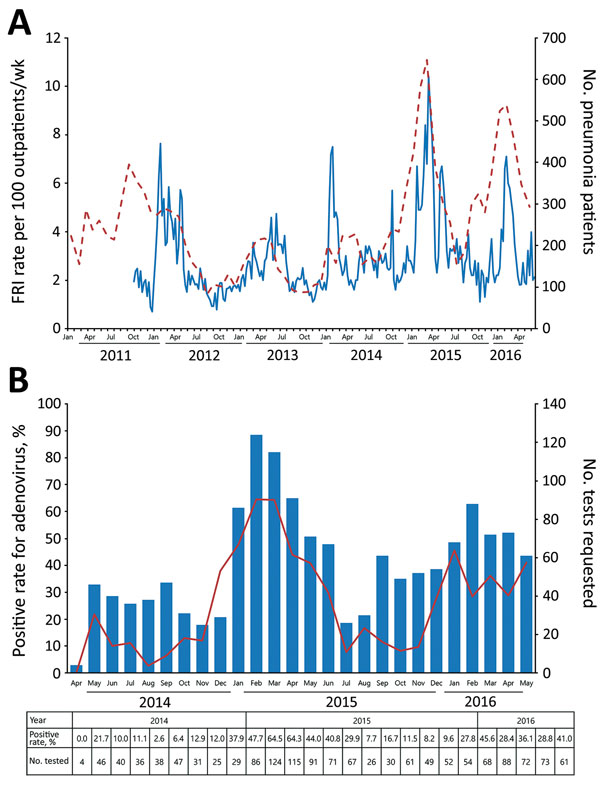Volume 23, Number 6—June 2017
Dispatch
Febrile Respiratory Illness Associated with Human Adenovirus Type 55 in South Korea Military, 2014–20161
Figure 1

Figure 1. A) Weekly febrile respiratory illness (FRI) rate (solid line) and monthly number of pneumonia patients (dashed line) in the South Korea military, 2011–2016. B) Positive rate of human adenovirus from respiratory specimens (red line) and the number of respiratory virus PCR requested (blue bar) from a tertiary military hospital, South Korea, 2014–2016. The rate and number for each month are shown in the table at bottom.
1Preliminary results from this study were presented at the Annual Spring Meeting of the Korean Society for Chemotherapy, April 21–22, Seoul, South Korea.
2These authors contributed equally to this article.
Page created: May 16, 2017
Page updated: May 16, 2017
Page reviewed: May 16, 2017
The conclusions, findings, and opinions expressed by authors contributing to this journal do not necessarily reflect the official position of the U.S. Department of Health and Human Services, the Public Health Service, the Centers for Disease Control and Prevention, or the authors' affiliated institutions. Use of trade names is for identification only and does not imply endorsement by any of the groups named above.